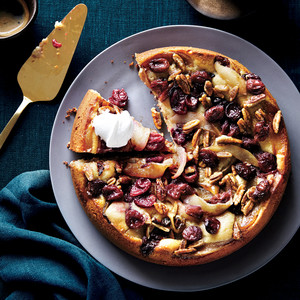October Breast Health
October is Breast Cancer Awareness month, and although I have written about breast health and nutrition in the past, a new study published in BMJ (British Medical Journal) is shedding new light on food and breast cancer. This study showed that there is an association between higher fruit intake and lower risk of breast cancer. Food choices during adolescence might be particularly important. What does that mean? Make sure that fruit is incorporated into a healthy diet, and the earlier you start, the better. Teens should be having three servings of fruit a day and women should be having two servings of fruit. Easy and delicious!
But what else can we do to reduce our risk? We can not eliminate risk of developing breast cancer (or other disease states), but we can reduce risk and there are three easy modifiable changes we can make to reduce risk.
- Maintain a healthy weight: A study published in Cancer Causes Control showed that generalized obesity is an important risk factor for postmenopausal breast cancer, but only among women who have never taken HRT. Lifetime weight gain is also a strong predictor of breast cancer. Eat a healthy, balanced diet and stay within a normal BMI. More important, pay attention to abdominal fat. For women, do not have a waist circumference over 35 inches.
- Move your body: Aim for 30 minutes of aerobic exercise most days. Studies have shown that exercise reduces risk of developing breast cancer.
- Reduce alcohol consumption: Alcoholic drinks increases the risk of both postmenopausal and premenopausal breast cancers. If you are going to consume alcohol, consumption should be limited to one drink per day for women, and two drinks per day for men. (One drink = 12 ounces of beer, 5 ounces. of wine, and 1.5 ounces. of liquor). Women do not metabolize alcohol the same way men do so the impact is greater on the body. It also influences hormones in the body.
It is also important to note that early pregnancy and breast feeding reduce risk of breast cancer.
So stay at a healthy weight, exercise, don’t drink and eat that fruit to stay as healthy as possible!
Roasted Grape and Pear Kuchen
Recipe from Cooking light
Ingredients
1/2 cup warm 2% reduced-fat milk (100° to 110°)
2 1/4 teaspoons dry yeast
1/2 cup granulated sugar, divided
2 tablespoons canola oil, divided
1 teaspoon vanilla extract
1 teaspoon grated lemon rind
1/2 teaspoon salt
1/2 teaspoon ground nutmeg
2 large eggs
9 ounces all-purpose flour (about 2 cups)
6 tablespoons unsalted butter, softened and divided
Baking spray with flour
1 1/2 cups seedless red grapes
2 firm peeled pears, cut into 1/4-inch-thick slices
1/4 cup chopped pecans
3 tablespoons brown sugar
1/2 teaspoon ground cinnamon
1 1/2 cups frozen reduced-calorie whipped topping, thawed
Preparation
1. Combine milk, yeast, and 1/2 teaspoon granulated sugar in a large bowl; stir with a whisk. Let stand 5 minutes.
2. Add remaining granulated sugar, 1 tablespoon oil, vanilla, rind, salt, nutmeg, and eggs; beat with a mixer at low speed until well combined. Add flour; beat at low speed 5 minutes or until batter is smooth. Add 5 tablespoons butter, 1 tablespoon at a time, beating after each addition. Smooth batter into a 9-inch springform pan coated with baking spray. Cover and let rise in a warm place (85°), free from drafts, 1 1/2 hours.
3. Preheat oven to 450°.
4. Combine remaining 1 tablespoon oil, grapes, and pears; arrange in a single layer on a baking sheet. Bake at 450° for 20 to 25 minutes or until tender. Cool completely. Reduce oven temperature to 350°.
5. Melt remaining 1 tablespoon butter. Combine grape mixture, butter, pecans, brown sugar, and cinnamon. Arrange mixture over dough. Bake at 350° for 30 minutes or until a wooden pick inserted in center comes out clean. Cool in pan for 15 minutes on a wire rack. Remove from pan, and place on a serving platter. Serve with whipped topping.
Recipe Time
Hands-on: 27 Minutes
Total: 3 Hours
Nutritional Information
Calories 281
Fat 12.4 g
Satfat 5.5 g
Monofat 4.4 g
Polyfat 1.7 g
Protein 4.6 g
Carbohydrate 39 g
Fiber 2 g
Cholesterol 47 mg
Iron 1 mg
Sodium 124 mg
Calcium 39 mg




